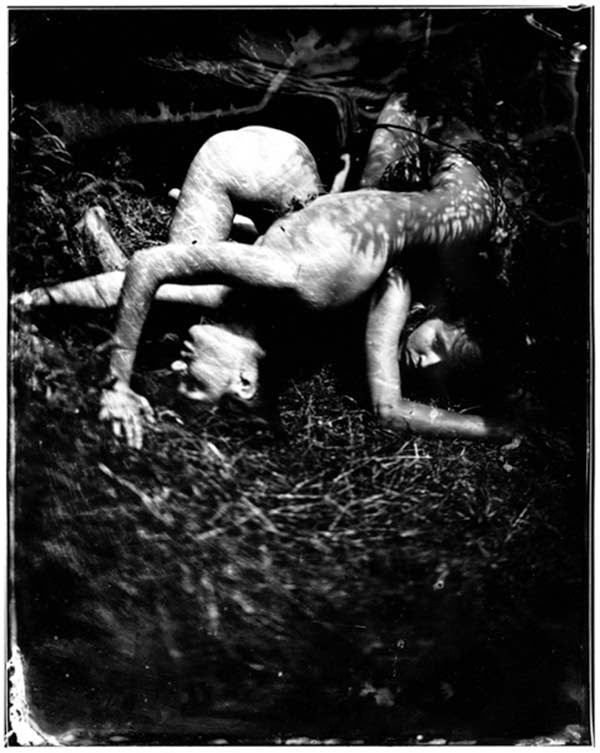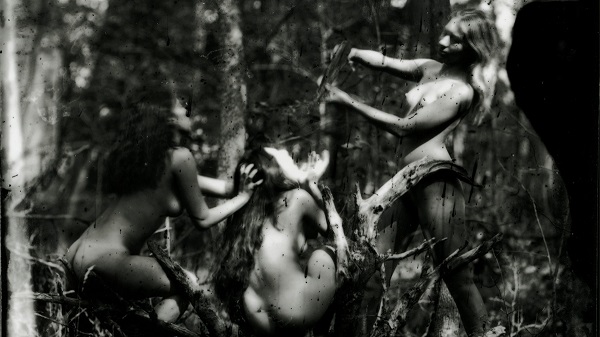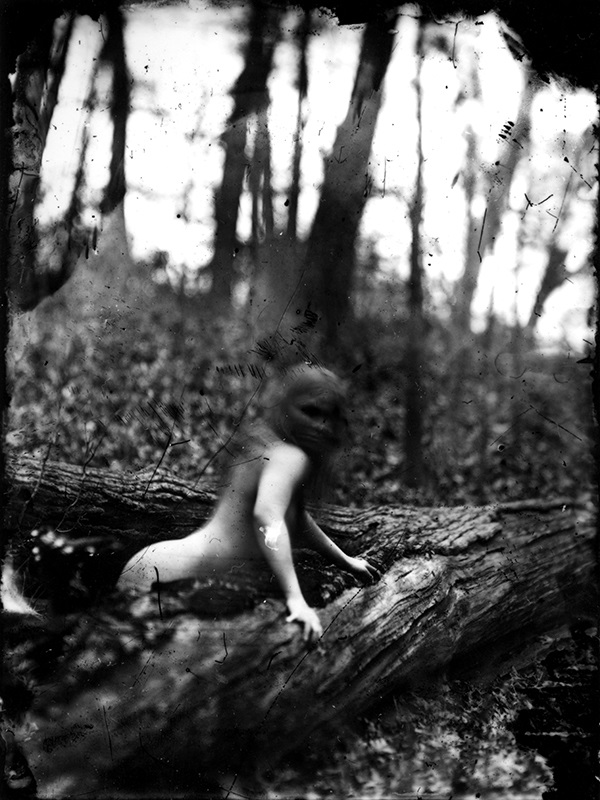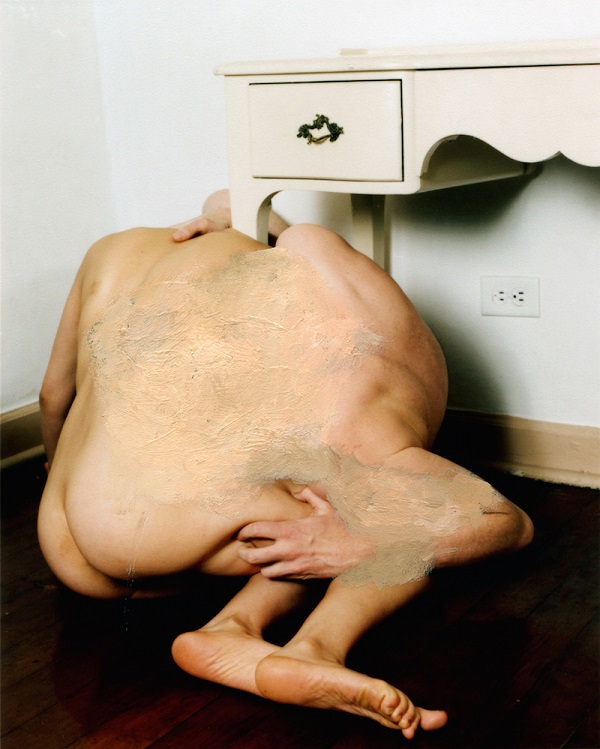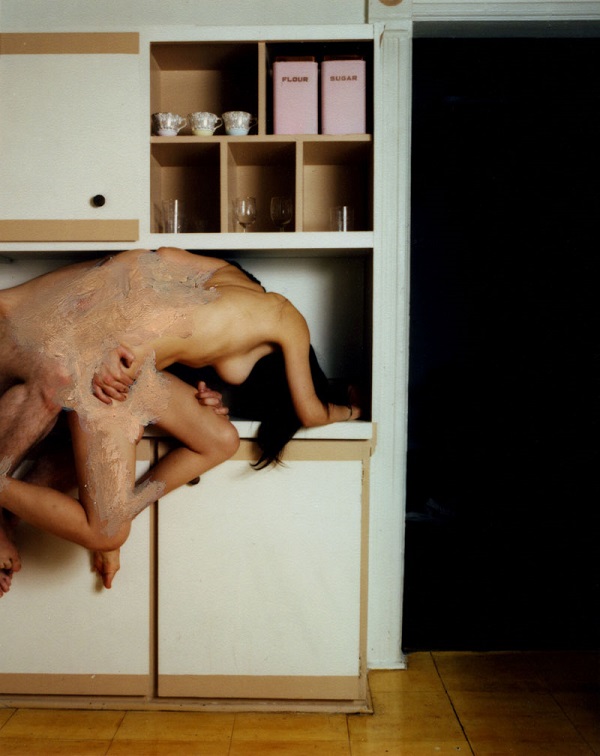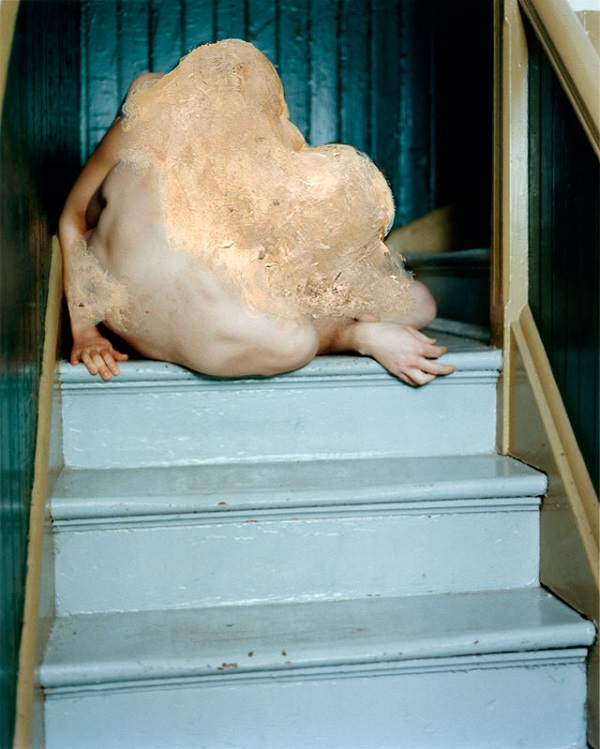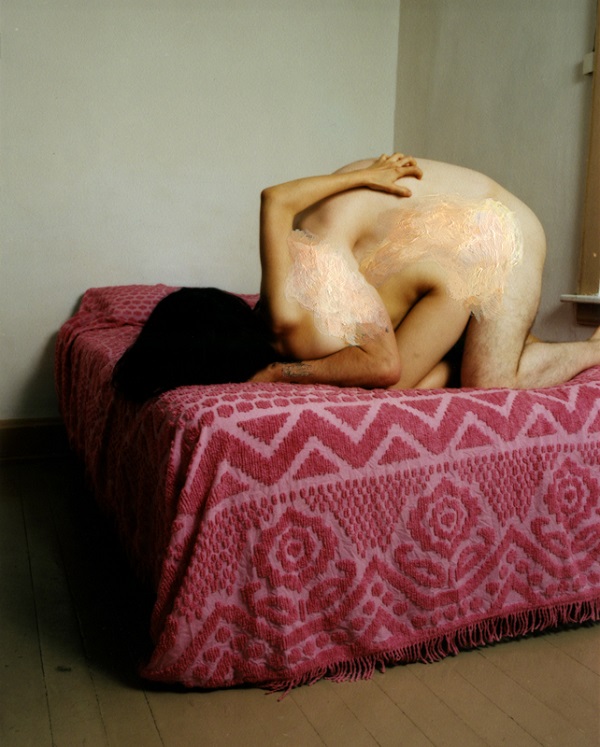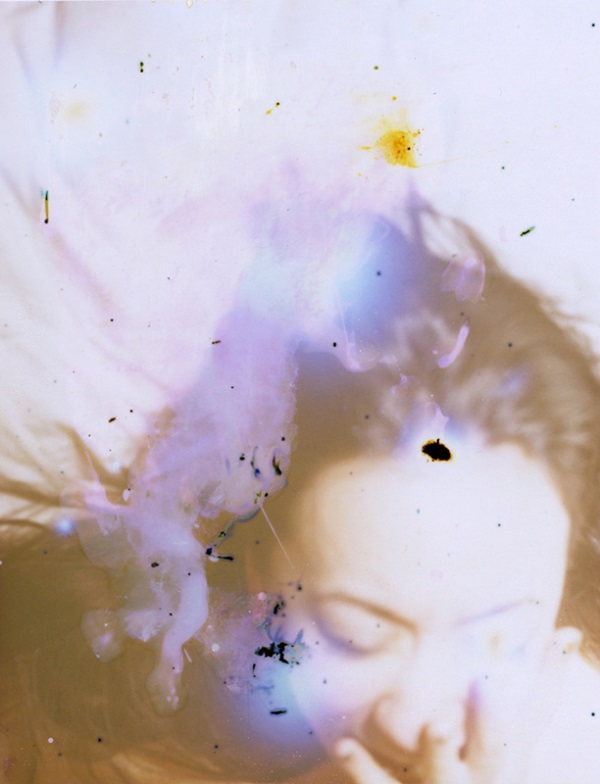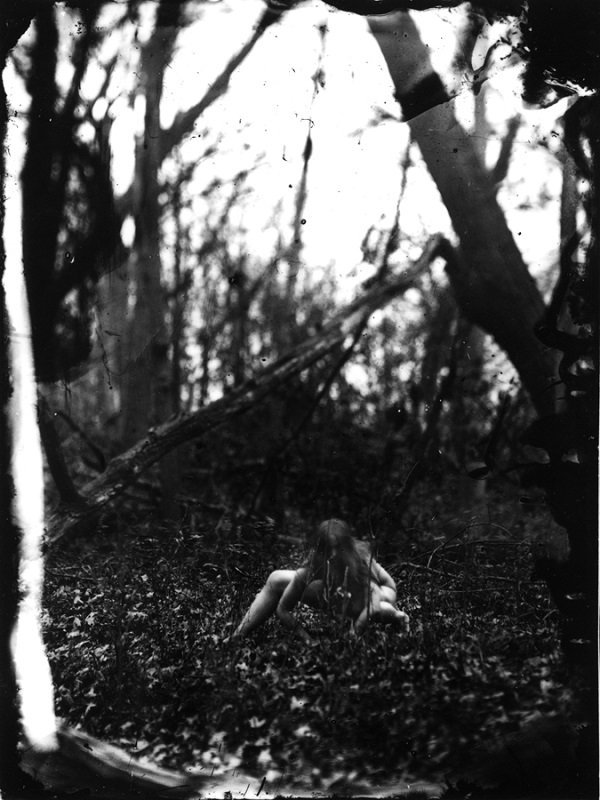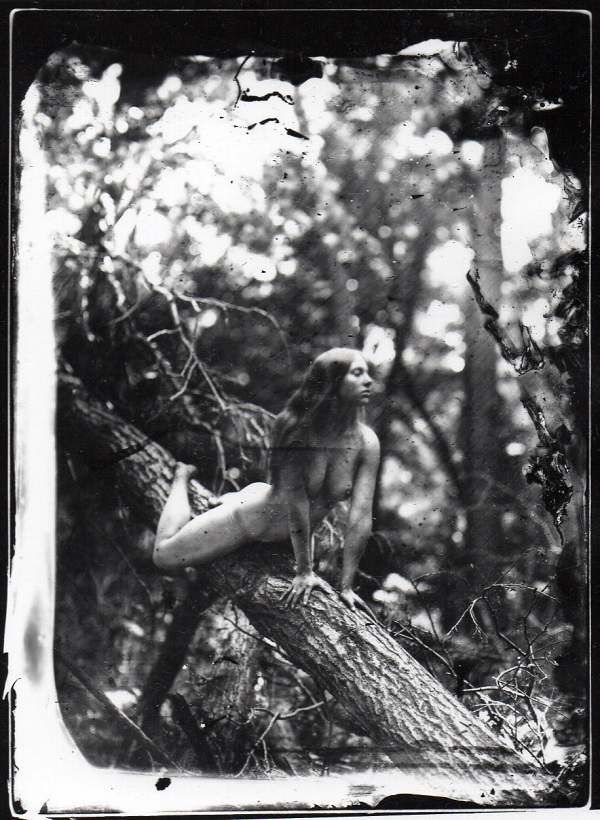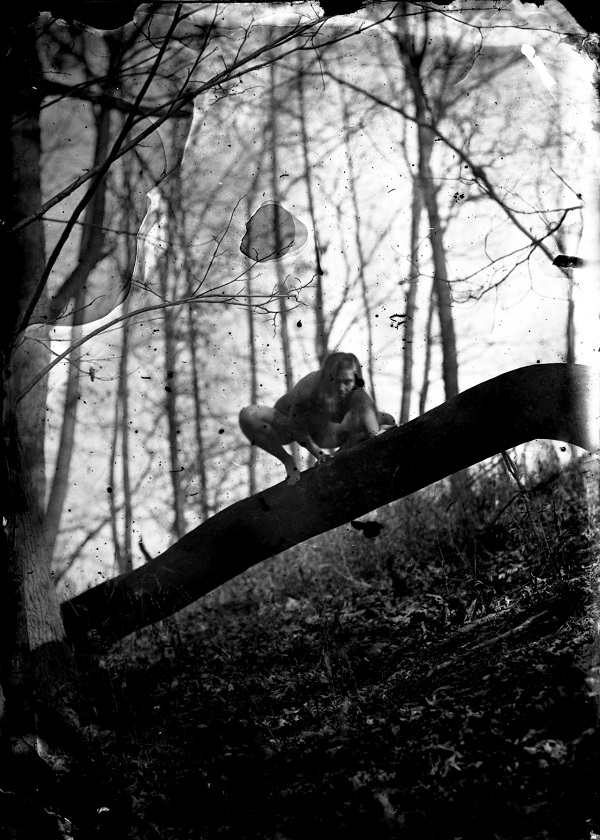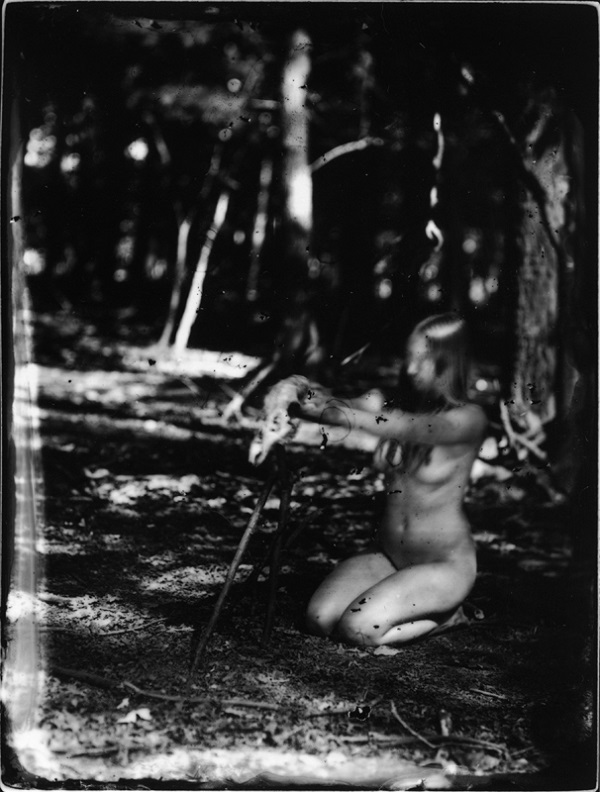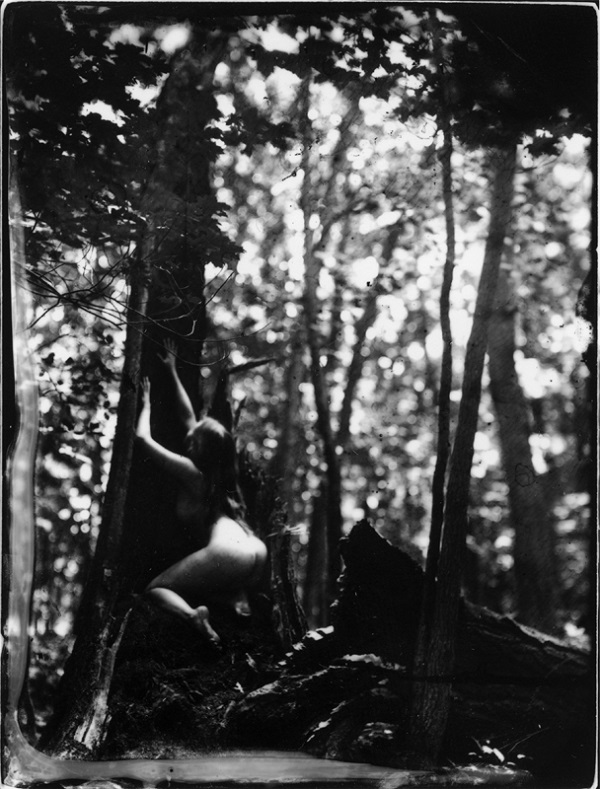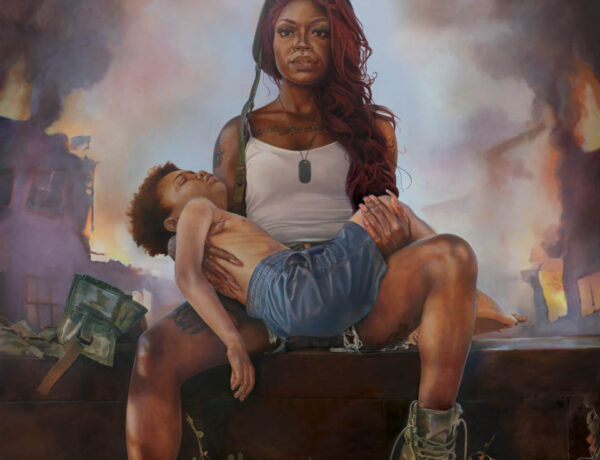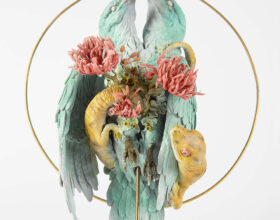From the darkest corners of history, to the visual manifestation of the spirit, photographer Rik Garrett is roving through the marrow of a beautiful and mysterious haze. Rik harnesses old, analog photography techniques and a deep sensibility that is both educated and magical. I dare to believe he is opening doors to the past, recreating a cross-section of witchcraft and the earliest technologies in photography, and to the spirit realm—illuminating phenomenon and sparking the imagination beyond the typical scope of artistry. The images are spiritually stirring, aesthetically stunning, and motion to the highest form of respect for femininity.
Can you talk a little bit about your career as an artist, how you got started, and what/who has inspired you the most?
As a child I was always drawing, writing and taking photographs with a Kodak Disc camera that I got for Christmas when I was six years old. The story that I always tell is that my mom was a photographer, and her darkroom was next to my bedroom. When I was 14, I decided to take a photography class at school, taught by a Social Studies teacher who had never used the darkroom before. Once I proved myself in the school darkroom, staying late and learning through a lot of trial and error, my mom slowly let me start using her space.
For several years, I swung between different projects: photography, painting, experimental music and writing. Around the time I turned 20, my mom decided to tear down her darkroom. She gave me some of her old equipment and I decided that would be a good opportunity to focus on photography for a while. I dropped my other projects and started spending all of my free time on photography, setting up a darkroom in my bathroom.
It seems that your images are created in a way that is both deliberate and incidental. Can you talk a little bit about your techniques, their historical significance, and your intention in using them?
I try to be very deliberate in my choice of materials. I think that my interest in the occult has made me hyper-aware of this. I want to make sure that the media in not in contrast with my goals, if that makes any sense. I want to have a connection to the materials. I think that’s part of the reason why I am so staunchly analog: I have been using these materials for so long that I have a connection to them.
For the Earth Magic series, the wet plate collodion process was instrumental in the way that series came about. It had the perfect gritty look, and an element of chance that was vital to the series. If I’d tried to take those photographs digitally, for example, they would have been terrible. Beyond that, though, there were other considerations. To make a photograph, you coat a plain piece of glass with chemistry and then make it sensitive to light by immersing it in a bath of a silver solution. Silver has lunar and feminine associations that I couldn’t ignore. It was too perfect.
The process is slow and deliberate, and involves my bringing a bunch of supplies out to the woods. A large camera, a portable darkroom, bottles of chemistry including ether and alcohol. It’s a lot of work for a photo shoot that might only yield five photographs. I think that ten is the most finished in a day. Of course, that’s before editing – not all of those photographs will be shown to the public.
Can you speak on your relationship with witchcraft, alchemy, the occult, and spirituality? In terms of the techniques that you use, do you feel the imperfections in the images are often the result of a real mystical phenomenon?
That’s my goal. Photography can be a very static medium. That’s generally its strong suit – the ability to faithfully document whatever is in front of the camera. That’s great and all, but I find that approach to be pretty boring. The medium of photography has so much more potential than that, I think.
I often try to introduce chance into the process as a way for outside factors to influence the imagery. So many esoteric technologies work this way. Tarot cards, runes, etc. You set the stage, have the proper tools and provide an opportunity for something else to intervene. People have been doing this with photography practically since its invention, though generally in a parapsychology context rather than an art context – spirit photography, thoughtography, radionic photography, etc. This has inspired a lot of my work, but with the different projects under the Subtle Bodies umbrella, I deal with this directly, utilizing these approaches in a fine art context.
I try to keep an open pathway for inspiration. Sometimes elements will come to me in dreams or other visions, and in some of my series I attempt to create artwork that functions for other people in that way – esoterically functional devices. Black mirrors that are photographs for gazing into other realms, or mandalas for meditating on. I was intentionally very vague in the way that I presented the Earth Magic book, but there have been people who have incorporated it into their own magical practice. People use it for pathworkings. It’s something that I hoped for but didn’t hint at. I didn’t include any of my own text with that book. I liked the idea of it working for the viewer on whatever level you come to it from. So for some people it’s a very straightforward photography book. Then there are other people have had deep esoteric experiences using the Earth Magic book as a starting point.
Each of your projects seems to have such depth, and they delve into the spiritual realm in different ways. Can you talk a little bit about the evolution or progression of your projects both in concept and in technique?
I like to read and collect books. If I notice that I keep gravitating toward certain themes, I take notes. Usually there will be an “aha!” moment where everything comes together. That happened with my Symbiosis series when I was sitting in a room listening to someone speak. My mind started to wander and suddenly the entire series came together, connecting all of these different subjects – Alchemy, the Surrealist artists that had inspired me, mating habits of Anglerfish, the cut-up method of Brion Gysin, the sigil magic of Austin Osman Spare. And the fact that I had recently fallen in love. Suddenly it all gelled and I could see this series very clearly. Of course, it then took me a year and a half to hone. I think that I went through eight series of tests before I decided on the right materials.
That’s usually the way that it works. I make a connection and tie together things that are of interest to me, usually in relation to some aspect of my life. Then I go further down the rabbit hole, researching, reading, testing, experimenting, and being receptive. Once you open yourself up to a certain idea, more of that information and imagery tends to find you.
I heard an interview with you on Your Creative Push where you talked a bit about having created Earth Magic to imagine the time period of photography invention in connection with witchcraft. Can you talk about this more? Did your fascination with the occult inform the specific techniques you used, or was it the other way around? Or are they each individual interests that you simply utilized together?
The process and the technique informed each other. I’m really not sure which came first. When I started with the wet plate collodion process, I had a hard time deciding how to make it “mine.” It’s so distinctive, and the process is limiting in some ways. So it’s very easy to take a very straightforward photograph and end right there. I played around with several things, and one day happened to take a photograph that had a nature witch feel to it. After I developed the plate and looked at it, I instantly knew where I was going next – that “aha!” moment that I mentioned earlier. All of the books I’d read on witchcraft, all of my thoughts on feminine archetypes in the occult and ideas on a very base occult practice – these all lined up in that instant.
What took longer, was deciding how to talk about the series. It all made sense in my head, but tying it all together in an intelligible way was hard: the history of witchcraft, history of photography, the interplay between fiction and genuine occult practice, my own reverence for the feminine that has influenced my interest in these things.
The process comes from the middle of the 19th Century, and it immediately conjures images of that time period when you see it. But my imagery is different enough from anything made during that time that it creates a kind of hazy space in history. You can’t quite place it. And that’s exactly what I wanted. I read in a book about some of the last witchcraft trials in Europe. They were much later than you’d think – the 1850s in France and England. As a photographer, I realized that these were the same places and periods that people were inventing photographic processes. So I imagined this crossover of a wild folk witchcraft and the invention of photography.
Your images are spiritually powerful, and aesthetically beautiful, and very often feature female subjects modeling nude. Especially in Earth Magic, is this an intentional suggestion or homage to female empowerment, and how does that tie into the witchcraft or spiritual concepts?
I definitely see it that way. Growing up, I tended to resonate with females more than males. While I had female friends and relatives that I was close to, there was always a perceived distance. I imagined that there was a certain inner order that I wasn’t allowed access to. In a way, that’s what I illustrate in Earth Magic. There is a history of women being called “witches,” being shown as being apart from society. For example the famous treatise on witchcraft, Malleus Maelifcarum, goes into great detail about these women who are attuned to nature and completely disconnected with civilization. It’s portrayed as being a bad thing, but it’s also romanticized. In my mind, these aren’t bad qualities. They are strengths. So I wanted to portray this world as a place of feminine power.
I wanted the women in this series to be strong. No “come hither” forest nymph imagery. I wanted this society to be truly wild and the nudity is an extension of that kind of feral mindset. Imagine walking through the woods and coming across one of these scenes. I think that most people would take off running.
With the growing opportunity for artists in social media and web marketing, can you talk a little bit about your connection with your online audience?
I’ve always tried to be accessible and relate to people directly. I’m not a business, just an individual artist. When people like my work, I’m genuinely flattered. It’s important to me to be sincere. I do my best to answer questions and admittedly feel a bit of an obligation to share new work with the people that follow me. Some people have followed me all across social media for the past fifteen years, collecting different work and showing support for whatever I do. I’m very thankful.
I’m appreciative for the ability to share and sell my work independently. Obviously, galleries still have their place, but it’s nice that people can find me directly. The downside is that you aren’t just an artist – you are an artist, a website designer, a PR person, a social media specialist. It’s easy to get sucked into all of that and not have time left to create new work.
I’ve noticed that you have had some problems in terms of censorship online: your accounts being deleted or being locked out of them. Can you talk a little bit about censorship, and what effect it has had (if any) on your journey as an artist?
I’ve had images removed on Facebook and Instagram. Last November my Instagram account was unceremoniously deleted one night, which is pretty frustrating in an era where these formats are so integral to connecting with people. In a way, it was both my personal account and the way that I promote my artwork. To lose that connection to people in one fell swoop is exasperating, to say the least. I made a new account, but in some regards still struggle to get the word out.
I have a hard time imagining who would report my images, which I think tend to be more tame than anything you’d see in any art museum. I know better than to be entitled regarding an Instagram account, and I recognize that technically some of my artwork breaks their rules. Some artists protect themselves by censoring their work, but I can’t bring myself to do this. I hate censorship, including self-censorship. If you see a photograph with black bars covering certain parts, all you see are the black bars. It feeds into an idea that there is something naughty about the images I’m sharing, and I don’t believe that. So I guess that’s the risk that I run.
Earth Magic seems to be one of your most popular projects, but I absolutely love your other work as well (especially Subtle Bodies). If you had to represent yourself as an artist through only one piece or series, what would you present and why?
This is a great question, and I’m really not sure how to answer that. Obviously, I always think that my newest work is my best. I have a new series that I just started working on yesterday, and even though it hasn’t officially begun I am pretty sure that it is some of my most exciting work.
At my core, I identify myself as a black and white photographer. That’s what I really know, and where a lot of my strengths lie. If I meet someone new and (without knowing anything about me or having seen my work before) they ask what I do, I tend to say, “I work with a lot of old photographic processes.” So in that way the Earth Magic series touches on that.
In other ways, Symbiosis was a real turning point for me. That series defines a moment where I was able to tie together different concepts very neatly for the first time. It is a series of images that ties together alchemical symbolism, and my feelings about falling in love and getting married, all in a neat little package. A lot of people still know me by that series – I think it really struck a nerve on a lot of different levels.
You mentioned Subtle Bodies, a series that I’ve been exploring in different ways for at least seven years now. I’ve been doing a lot more with that series lately, and in description probably sum up my art practice better than any other does. Using analog photographic media, exploring historical approaches in esoteric photography in reference to my own personal life.
What is next for you, Rik? New projects/gallery shows/another book, perhaps?
I don’t currently have any exhibitions planned. I’ve been working on several new projects, most of which I don’t want to share too much about quite yet. I’ve been working on my Subtle Bodies series a lot, experimenting with new approaches to historical esoteric photography practices. I’m at different stages of a couple of photo-based mixed media projects. I’m still working on some Earth Magic related imagery, but it’s not a priority. I’m juggling a lot of new things right now, so most of my time has been dedicated to making headway with those.
I’ve also just recently started a new video series. I realized that people were asking me questions about some of my influences – the history of spirit photography, thought photography. People seem to be getting more interested in this now. So I’ve started a video series on YouTube called Spectralities, where I discuss the history of these practices and tie it together with art history and some of the cultural advances that play into these practices of technical innovation, cultural shifts, religious movements, and occult movements.




